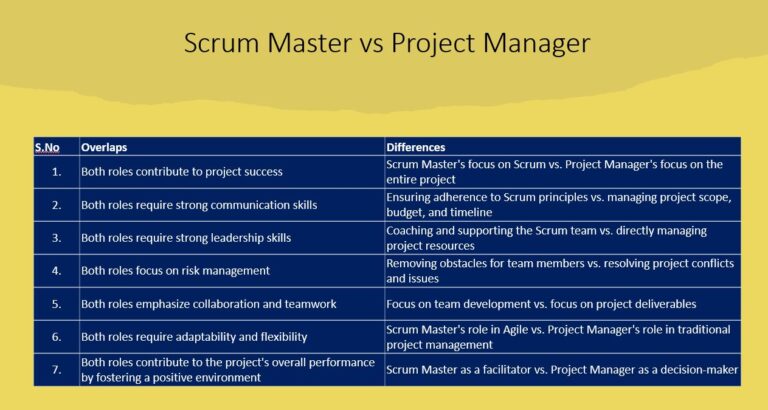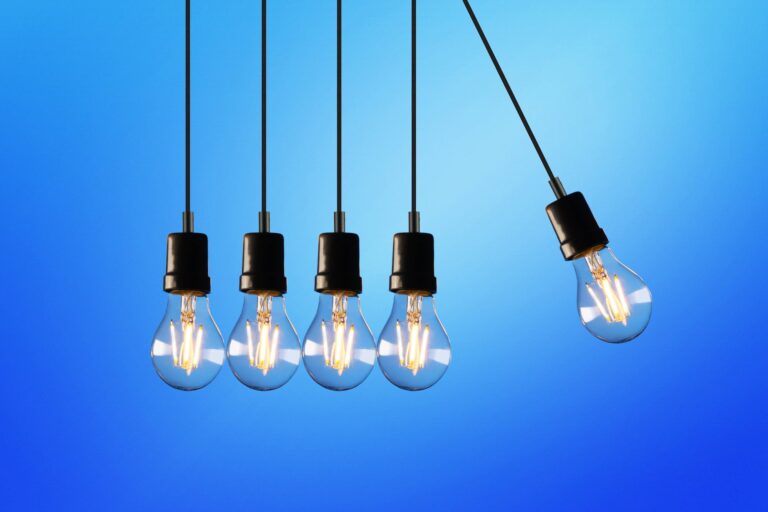Scrum vs Waterfall: 5 Similarities & Differences You Need To Know
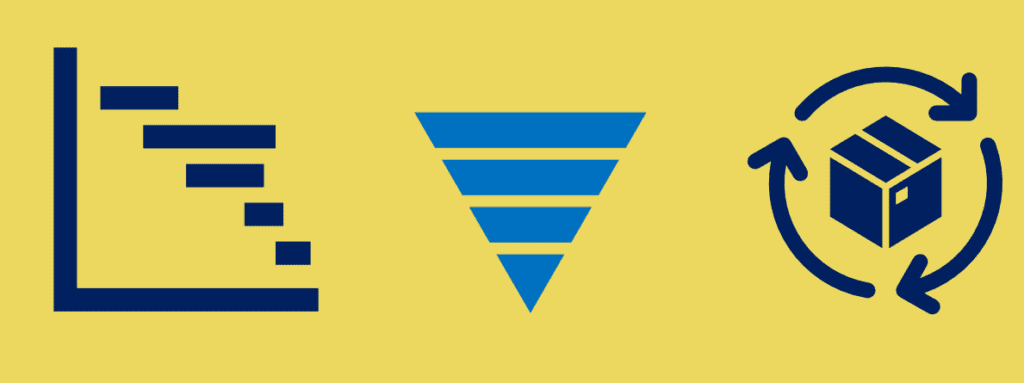
Scrum vs Waterfall
What’s better better between Scrum vs Waterfall? This is a question many project managers themselves when they start a new initiative.
Scrum and Waterfall are two of the most popular approaches to project management, with each providing its own unique benefits. While both Scrum and Waterfall have been used successfully in various domains ranging from software development teams to agile coaching, understanding their similarities—as well as their differences—is key for making the right decision about which approach best fits your needs.
In this post, we’ll explore 5 key similarities & differences you need to know when weighing your options between a scrum or waterfall approach. Get ready to dive into some technical jargon (while also busting through some myths) so you can make an informed decision on what’s right for your team!
Key Similarity 1: Project Phases
One of the key similarities between Scrum and Waterfall software development life cycle is that both methodologies have distinct project phases. While the number and names of these phases may vary slightly depending on the project, both methodologies follow a similar general structure.
In waterfall project management , the project phases are typically defined as follows:
- Requirements gathering: This phase involves gathering and documenting all of the project requirements, including business requirements, functional requirements, and technical requirements.
- Design: In this phase, the project team creates a detailed design of the project solution based on the requirements gathered in the previous phase.
- Implementation: This is the phase where the actual development work takes place. The project team creates the code and builds the solution based on the design.
- Testing: In this phase, the project team conducts a series of tests to ensure that the solution works as intended and meets all of the requirements.
- Deployment: Once the solution has been thoroughly tested and approved, it is deployed to the production environment.
Scrum, on the other hand, has a slightly different set of project phases:
- Planning: In this phase, the project team defines the project goals and objectives, identifies the requirements, and creates a high-level plan for how the project will be executed.
- Sprint planning: The project team breaks down the high-level plan into smaller, more manageable chunks of work called sprints.
- Sprint execution: The project team executes each sprint, completing the work defined for that sprint within the time allotted.
- Review: At the end of each sprint, the project team reviews the work completed during that sprint and determines whether the project is on track to meet its goals.
- Retrospective: In this phase, the project team reflects on the previous sprint and identifies areas for improvement, making adjustments as needed for the next sprint.
While both methodologies have distinct project phases, the key difference between them lies in the order in which these phases are completed. In Waterfall, each phase is completed sequentially and cannot begin until the previous phase has been completed. In Scrum process, the phases are completed iteratively, with each phase building on the previous one. This allows for greater flexibility and adaptability, as the project team can adjust the project plan as needed based on feedback received during each sprint.
Difference 1: Flexibility
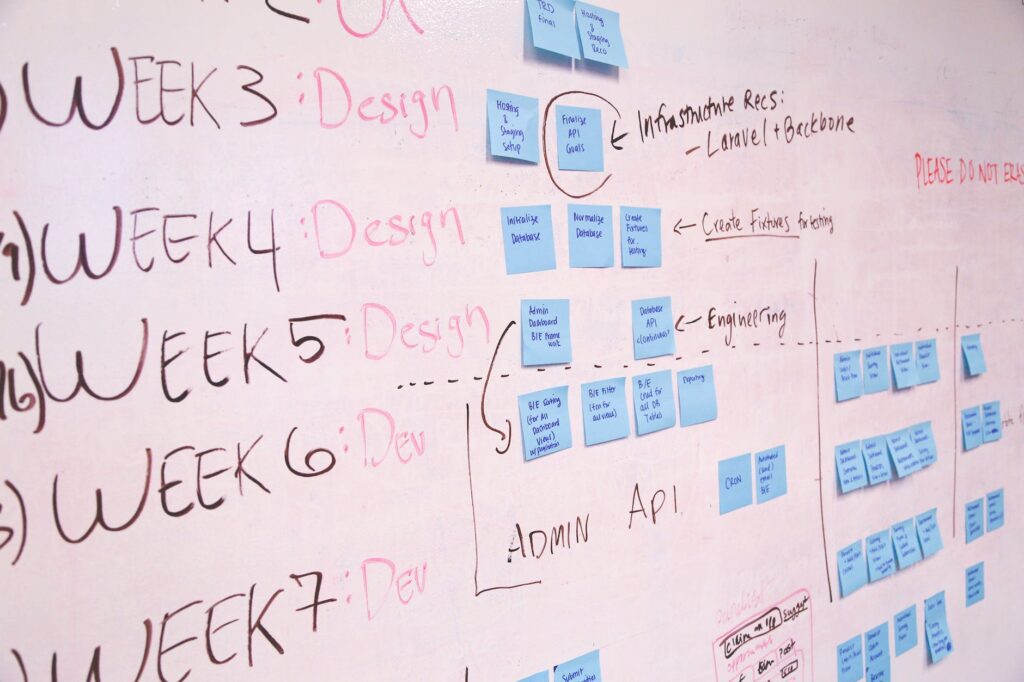
One of the key differences between Agile methodologies like Scrum and Waterfall is the level of flexibility offered by each methodology. Scrum is designed to be more flexible than Waterfall, allowing project teams to adjust their approach and adapt to changing requirements and circumstances. This is in contrast to Waterfall, which is known for its rigid, linear approach.
In Scrum, flexibility is built into the very fabric of the methodology. For example, the use of sprints allows the project team to focus on smaller, more manageable pieces of work, which can be adjusted as needed to accommodate changes in requirements or priorities. Additionally, the daily stand-up meetings provide a forum for project team members to communicate any issues or challenges they are facing, allowing the team to make real-time adjustments to the project plan as needed.
This flexibility can be advantageous in a variety of situations. For example, if a project team discovers a major issue during the development phase, they can quickly pivot and adjust their approach to address the issue. Similarly, if the project team receives feedback from stakeholders that requires a change in direction, they can easily incorporate that feedback into the project plan and adjust their approach accordingly.
Another advantage of Scrum’s flexibility is that it allows project managers & stakeholders to be more responsive to changing market conditions or customer needs. In today’s fast-paced business environment, it’s essential for organizations to be able to pivot quickly in response to changing circumstances. Scrum’s iterative approach and focus on delivering value early and often makes it well-suited for organizations that need to be able to adapt quickly to changing market conditions.
In contrast, Waterfall’s rigid approach can be a disadvantage in situations where the project requirements are likely to change or evolve over time. In such situations, the Waterfall approach may result in delays or rework, as changes to the project plan are not easily accommodated.
Overall, Scrum’s flexibility is a key advantage that makes it well-suited for projects where the requirements are likely to change or evolve over time, or where there is a need for a more responsive approach. By allowing project teams to adjust their approach as needed, Scrum can help organizations deliver projects more quickly and efficiently, while still meeting the needs of stakeholders and delivering high-quality solutions.
Similarity 2: Focus on Deliverables
Both Scrum and Waterfall place a strong emphasis on delivering specific outputs or deliverables throughout the project lifecycle. This focus on deliverables is intended to drive progress in the project and ensure that the project team is meeting the needs of stakeholders.
In Waterfall, the emphasis on deliverables is reflected in the project plan, which typically includes a detailed description of the project scope, timeline, and deliverables. Each stage of the Waterfall process is designed to produce a specific deliverable or set of deliverables, such as requirements documents, design specifications, or test plans.
By focusing on specific deliverables, Waterfall helps the project manager to ensure that each stage of the project is completed thoroughly and that the project team has a clear understanding of what needs to be accomplished at each stage.
Similarly, in Scrum, the focus on deliverables is reflected in the product backlog, which is a prioritized list of features or requirements that the project team needs to deliver. The product backlog is continually refined and updated throughout the project lifecycle, with the highest priority items being addressed first. Each iteration or sprint in Scrum is designed to produce a working increment of the product, which is a specific set of deliverables that have been completed and tested.
The focus on deliverables in both Scrum and Waterfall drives progress in the project by providing a clear roadmap for the project team. By breaking the project down into smaller, more manageable pieces, the project team can focus on delivering specific outputs and making progress towards the overall project goal. This approach also helps to ensure that the project team is meeting the needs of stakeholders by delivering tangible outputs at regular intervals throughout the project lifecycle.
Overall, the focus on deliverables in both Scrum and Waterfall is a key similarity between the two methodologies. By providing a clear roadmap for the project team and emphasizing the importance of specific outputs, both methodologies help to drive progress in the project and ensure that the project team is meeting the needs of stakeholders.
Key Difference 2: Feedback
One of the significant differences between Scrum and Waterfall methodologies is the emphasis on feedback. While Waterfall methodology assumes that all the requirements of a project are known upfront and focuses on delivering the project output based on these requirements, Scrum encourages a continuous feedback loop.
In Scrum, feedback is critical for the success of the project. The methodology promotes regular reviews and testing of the output, allowing for continuous improvements and adjustments. The feedback loop starts with the sprint review meeting, where the product owner and other stakeholders assess the output delivered in the previous sprint. The team members discuss the results of the review and plan their work for the next sprint.
Scrum methodology’s iterative approach ensures that feedback is incorporated throughout the project’s development, making it easier to adjust and adapt the project’s output to meet the customer’s evolving needs. This is different from Waterfall, where feedback often comes at the end of the project, where it can be too late or expensive to make significant changes.
An example of how feedback loops in Scrum can benefit a project is in software development. If a software development team uses the Scrum methodology, they can create a minimum viable product (MVP) in the first sprint, which is then reviewed by the product owner and other stakeholders. Based on the feedback, the team can make changes and improvements, ensuring that the final product meets the customer’s needs.
In contrast, in Waterfall, the project team may spend several months or even years developing the software before presenting it to the stakeholders, only to discover that the output does not meet their requirements. This approach can be costly and time-consuming, leading to frustration and disappointment for both the project team and the stakeholders.
Overall, Scrum’s emphasis on feedback ensures that the project output meets the customer’s requirements and improves the quality of the final product, making it more likely to succeed.
Key Similarity 3: Team Collaboration

Both Scrum and Waterfall require a high degree of collaboration among team members to ensure project success. In Waterfall, team members collaborate at the beginning of the project to establish project requirements, and then work independently during the implementation phase. On the other hand, Scrum teams collaborate throughout the project in order to achieve continuous improvement.
In Scrum, the team is cross-functional and self-organizing, which means that each team member takes on multiple roles and responsibilities. This leads to a more cohesive team dynamic where everyone is invested in the success of the project. Scrum emphasizes regular team meetings, such as the daily stand-up, sprint review, and retrospective, which provide opportunities for team members to discuss progress, challenges, and opportunities for improvement.
In Waterfall, collaboration occurs mainly during the planning phase, when the team defines project requirements and establishes timelines. Team members work independently during the implementation phase, relying on a predefined plan. This can limit the team’s ability to adapt to changing circumstances and can result in delays if issues arise.
Collaboration is essential in both methodologies, and when done effectively, it can lead to successful project outcomes. By fostering a culture of collaboration, team members are encouraged to share ideas and knowledge, which can lead to innovative solutions and better decision-making. Ultimately, this can help ensure that projects are completed on time, within budget, and to the satisfaction of all stakeholders.
For example, a software development team using Scrum might collaborate to identify and prioritize features for a new product. The team would then work together to implement those features over the course of several sprints, holding regular team meetings to discuss progress and address any issues that arise. This collaborative approach allows the team to stay on track and deliver a high-quality product.
In contrast, a Waterfall team might collaborate to define project requirements, establish timelines, and then work independently to complete their assigned tasks. However, if any issues arise during the implementation phase, team members may need to collaborate again to adjust the project plan. This lack of ongoing collaboration can lead to delays and may impact the quality of the final product.
Key Difference 3: Project Control
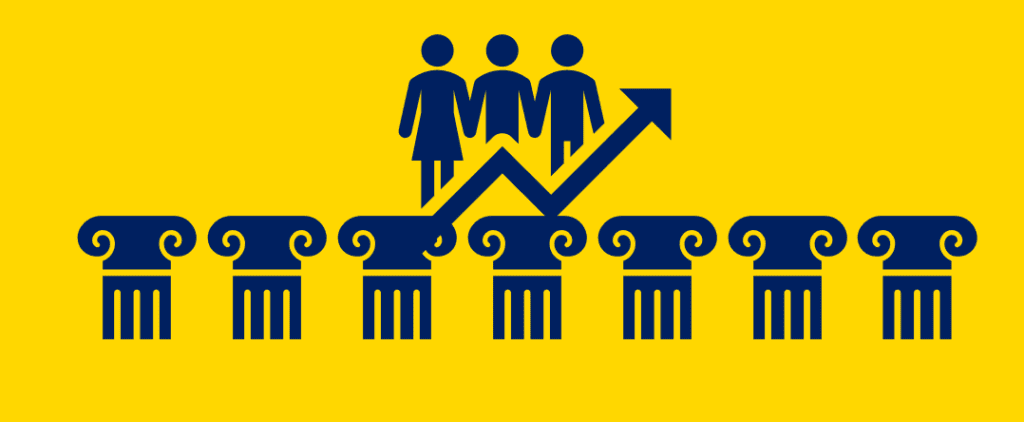
While both Scrum and Waterfall methodologies require project management and control, Waterfall is known for providing greater project control.
In the Waterfall methodology, project control is emphasized through a highly structured and rigid process that is divided into distinct phases. Each phase of the project must be completed before the next phase can begin, and each phase has its own set of specific deliverables.
In contrast, Scrum is designed to be more flexible and adaptive to change. While Scrum projects still have a defined timeline and set of goals, the focus is more on regular review and adaptation of the process. The Scrum team is self-organizing and empowered to make decisions and changes to the project plan as necessary.
There are certain situations where the greater control offered by Waterfall may be necessary. For example, in highly regulated industries, such as healthcare or finance, there may be strict requirements and regulations that must be followed throughout the project. In these cases, the structured approach of Waterfall can help ensure compliance with these requirements.
Another example where project control is critical is when managing large projects with many stakeholders. In these cases, Waterfall can help provide greater visibility and predictability in terms of project timelines, budgets, and deliverables. The detailed planning and documentation required by Waterfall can help ensure that all stakeholders are aware of the project status and any changes that may occur.
Overall, while Scrum may provide greater flexibility and adaptability, Waterfall can be a better fit for projects that require greater project control and structure. Ultimately, the choice of methodology will depend on the specific needs and constraints of the project, as well as the preferences and experience of the project team.
Key Similarity 4: Risk Management
Both Scrum and Waterfall approaches acknowledge the potential for risk in a project and aim to minimize it. Risk management is an essential component of any project management methodology, as it helps to identify, evaluate, and mitigate potential risks that could affect the project’s outcome.
In Scrum, risk management is integrated into the methodology, and risks are addressed through an ongoing process of review and adaptation. The Scrum framework encourages team members to identify and assess risks at the outset of the project and throughout its lifecycle. During the Sprint Review meetings, the team reflects on the Sprint and identifies any potential risks or issues that need to be addressed in the next Sprint. Scrum also places an emphasis on transparency, and risk factors are communicated to all team members, stakeholders, and customers. This open communication ensures that risks are addressed and mitigated in a timely and effective manner.
In contrast, Waterfall methodology has a more formal approach to risk management. Risks are identified at the beginning of the project and evaluated during the planning phase. Risk management is generally viewed as a separate process that is conducted at specific stages of the project, such as the design phase, development phase, and testing phase. A risk management plan is created, which outlines the risks, potential impact, and mitigation strategies. This plan is often communicated to the project team, stakeholders, and customers.
The approaches to risk management differ in how they address risk during the project lifecycle. Scrum’s approach is more dynamic, while Waterfall’s approach is more structured. Scrum allows for a more iterative and flexible approach to risk management, where risks can be addressed and mitigated as they arise. In contrast, Waterfall’s approach is more static and formal, with risk management viewed as a separate process that is conducted at specific stages of the project.
Ultimately, both Scrum and Waterfall aim to minimize project risks and ensure that projects are completed successfully. The key difference is the approach to risk management, with Scrum providing a more dynamic and flexible approach, while Waterfall provides a more structured and formal approach.
Key Difference 4: Documentation

One significant difference between Scrum and Waterfall is the amount of documentation required. In the Waterfall methodology, documentation is a critical aspect of the development process. It helps to define the project requirements, document the design and development processes, and ensure that the final product meets the specifications.
Waterfall’s heavy documentation requirement is a result of its sequential and linear approach to project management. Because each stage of the process builds upon the previous one, documentation is essential for ensuring that all stakeholders are on the same page and that there is a clear understanding of the project’s progress.
On the other hand, Scrum emphasizes collaboration, communication, and flexibility, making documentation less of a priority. Instead, the focus is on delivering working software and improving it through continuous feedback. The agile approach emphasizes the importance of communication over documentation.
In Scrum, documentation is not completely eliminated, but it is minimized to only what is necessary. Instead of documenting every aspect of the development process, Scrum emphasizes working software as the primary measure of progress. Documentation in Scrum is usually limited to user stories, sprint plans, and release notes.
While excessive documentation can be time-consuming and distract from actual development work, a lack of documentation can cause misunderstandings, delays, and rework. Therefore, it is essential to find the right balance between documentation and development work.
Key Similarity 5: Quality Assurance
Both Scrum and Waterfall prioritize quality assurance as a key component of project success. Quality assurance involves ensuring that the final product meets the expected standards of quality, reliability, and functionality.
In Waterfall, quality assurance typically occurs at the end of each phase, with a formal review of the outputs before the project moves onto the next phase. This is because each phase in Waterfall is considered to be a discrete stage of the project, and there is little opportunity for feedback or change once that phase is complete. The emphasis on formal reviews means that any errors or defects may not be discovered until late in the project, making it difficult to rectify them without significant time and cost implications.
In contrast, Scrum employs continuous quality assurance throughout the project. This is achieved through a combination of continuous feedback loops and a focus on delivering working software in short iterations. In Scrum, quality assurance is the responsibility of the entire team, not just a separate quality assurance team. This means that defects and errors are detected early in the project and can be rectified quickly, reducing the risk of major issues arising later in the project.
Scrum teams also use various techniques such as automated testing, peer reviews, and continuous integration to ensure high-quality output throughout the project. The continuous feedback loops in Scrum also mean that quality assurance is an ongoing process, with the team continually assessing and improving their processes to deliver better-quality software.
Key Difference 5: Change Management

One of the most significant differences between Scrum and Waterfall is their approach to change management. Change is inevitable in any project, and how a methodology handles it can determine the project’s success. Waterfall is known for its rigid structure, making it difficult to accommodate changes once a phase has been completed. In contrast, Scrum provides a more flexible approach that allows for changes to be made more easily.
Scrum’s Agile approach is built around the concept of embracing change. Scrum teams continuously review and adjust their work, with the goal of delivering value to the customer as soon as possible. The Scrum framework includes several ceremonies that encourage collaboration and communication, making it easier for the team to adapt to changes in project requirements.
One of the primary ways Scrum handles change is through the Product Backlog. The Product Backlog is a prioritized list of user stories that the Scrum team works on during each sprint. The team reviews and updates the Product Backlog at the end of each sprint, allowing them to adjust their priorities and make changes based on the customer’s needs.
Another way Scrum handles change is through the Sprint Retrospective ceremony. The Sprint Retrospective is a time-boxed event that occurs at the end of each sprint. During the Retrospective, the Scrum team reflects on the previous sprint and identifies areas for improvement. This reflection allows the team to identify potential changes that could be made to improve the product or the team’s processes.
Scrum’s approach to change management can be beneficial in a variety of situations. For example, if a customer has a change in requirements midway through a project, Scrum allows the team to quickly adjust their priorities and make the necessary changes. Additionally, if the team encounters a roadblock or obstacle during a sprint, Scrum allows them to pivot and focus on a different area to ensure that the project remains on track.
In contrast, Waterfall’s rigid structure makes it difficult to accommodate changes once a phase has been completed. Once a phase is finished, it is challenging to go back and make changes without affecting the entire project’s timeline. Waterfall’s linear approach makes it difficult to adjust project requirements as the project progresses. This can be especially challenging in projects where the customer’s needs are not fully understood at the beginning of the project.
Wrap Up
In summary, Scrum and Waterfall are two of the most widely used project management methodologies today, each with its own strengths and weaknesses. While Scrum is known for its flexibility, emphasis on continuous feedback and effective change management, Waterfall is known for its strong project control and thorough documentation. However, both methodologies share certain similarities such as the emphasis on delivering specific outputs, risk management, and the need for effective teamwork and collaboration.
Ultimately, the choice of methodology depends on the specific requirements of a project. For instance, if a project requires a well-defined scope and a predictable timeline, Waterfall may be the best fit. On the other hand, if a project requires flexibility and adaptability to changing requirements, Scrum may be the better choice.
Frequently Asked Questions
What is Agile methodology and how is it different from traditional project management?
Agile methodology is an iterative approach to project management that emphasizes flexibility and customer satisfaction. It is different from traditional project management because it focuses on delivering working software in short periods of time and welcomes changes throughout the project lifecycle. Traditional project management, on the other hand, follows a linear process where the project moves from one phase to another in a sequential manner.
What are the key roles and responsibilities of a Scrum Master in a software development project?
A Scrum Master is responsible for ensuring that the Scrum team adheres to the Agile principles and practices. They facilitate the Scrum ceremonies such as daily stand-up meetings, sprint planning meetings, and retrospective meetings. Additionally, they remove any obstacles that are hindering the team’s progress and protect them from external disruptions. The Scrum Master is also responsible for promoting a culture of continuous improvement and facilitating collaboration among team members.
How can Agile methodology help to manage changes in software development projects?
Agile methodology is designed to be adaptable and flexible, allowing for changes to be made throughout the project lifecycle. The Agile framework includes regular sprint reviews and retrospectives, which provide opportunities for stakeholders to give feedback and identify changes that need to be made. The iterative approach of Agile methodology allows the team to quickly implement changes in response to customer needs or shifting project requirements.
What are some common challenges faced by teams when transitioning to Agile methodology?
Some common challenges that teams face when transitioning to Agile methodology include resistance to change, lack of experience with Agile practices, difficulty in defining project scope and requirements, and communication barriers. Additionally, teams may struggle with adapting to the fast-paced nature of Agile methodology and may find it challenging to balance delivering high-quality software with meeting tight deadlines.
How does the Agile methodology approach risk management in software development projects?
Agile methodology approaches risk management by identifying potential risks early in the project lifecycle and continuously monitoring them throughout the project. The team prioritizes risks based on their potential impact on the project and implements risk mitigation strategies during the sprint planning phase. Additionally, the iterative approach of Agile methodology allows the team to quickly respond to new risks that may arise during the project.
How can Agile methodology be applied to non-software development projects?
Agile methodology can be applied to non-software development projects by adapting the principles and practices of Agile to fit the specific project needs. For example, Agile can be used in marketing campaigns, event planning, or even construction projects. The key is to focus on delivering value to the customer in short iterations, prioritizing collaboration and communication, and being adaptable to changes throughout the project lifecycle.
Article also published on author’s Medium.com profile
More from the author on Agile coach, Scrum Master / Product Owner / Why you need a Career Coach / Managing Managers / IT Career switch. Ilam also is a keen AI enthusiast & writes about popular AI tools like Jasper, Writecream etc.

